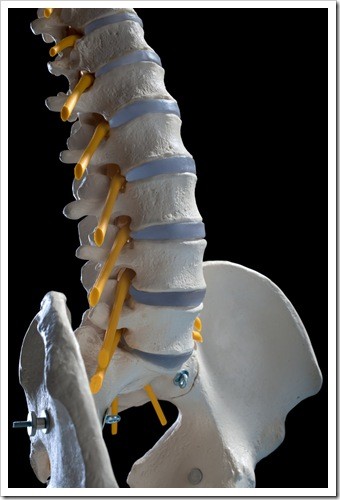 Nearly every adult today has experienced some form of back pain in their lifetime, whether it was caused by lifting something awkwardly or strenuous activity. More often than not, this pain will subside after a period of rest if it is purely muscular pain. However, spinal disc injuries cause more extreme pain and are usually described in many different ways. The pain experienced by a spinal disc injury has also been compared to the pain of childbirth. Understanding what the discs in our back do and how they work is extremely important in treating spinal disc injuries.
Nearly every adult today has experienced some form of back pain in their lifetime, whether it was caused by lifting something awkwardly or strenuous activity. More often than not, this pain will subside after a period of rest if it is purely muscular pain. However, spinal disc injuries cause more extreme pain and are usually described in many different ways. The pain experienced by a spinal disc injury has also been compared to the pain of childbirth. Understanding what the discs in our back do and how they work is extremely important in treating spinal disc injuries.
What is the purpose of Spinal Discs?
Situated in between our vertebrae are pads called the intervertebral discs. These discs contain a gel-like soft center and a stronger outer shell. They are attached to our vertebrae and act as separators. These discs are highly effective shock absorbers that offer a guard to prevent the bones from rubbing against each other when we move. The discs in our spine keep it strong and supple.
A protruding disc occurs when the gel in the disc begins to push out against the ligamentous wall of the disc but does not compromise or tear the wall. Two-thirds of pain-free adults have one or more protruding discs within their spine. A herniated disc is when the gel in the disc pushes out and starts to tear through the first layers of the ligamentous wall. This movement of gel can irritate the nerve, causing inflammation and often severe pain.
One of the more serious conditions is called a disc extrusion, sometimes known as a ruptured disc. This occurs when the gel of the disc breaks through the ligamentous wall. When this gel leaks out of the disc, it can cause extreme back pain and significantly reduced movement.
You Don’t Need Surgery to Recover From a Spinal Disc Injury
If you are suffering from a spinal disc injury or just back pain in general, then come and visit our team and see what Chiropractic care can do for you. Our team will help to alleviate your pain and get you back on track to leading a healthy, pain-free lifestyle!
For Your Health,
Dr. Larry Lubcke
